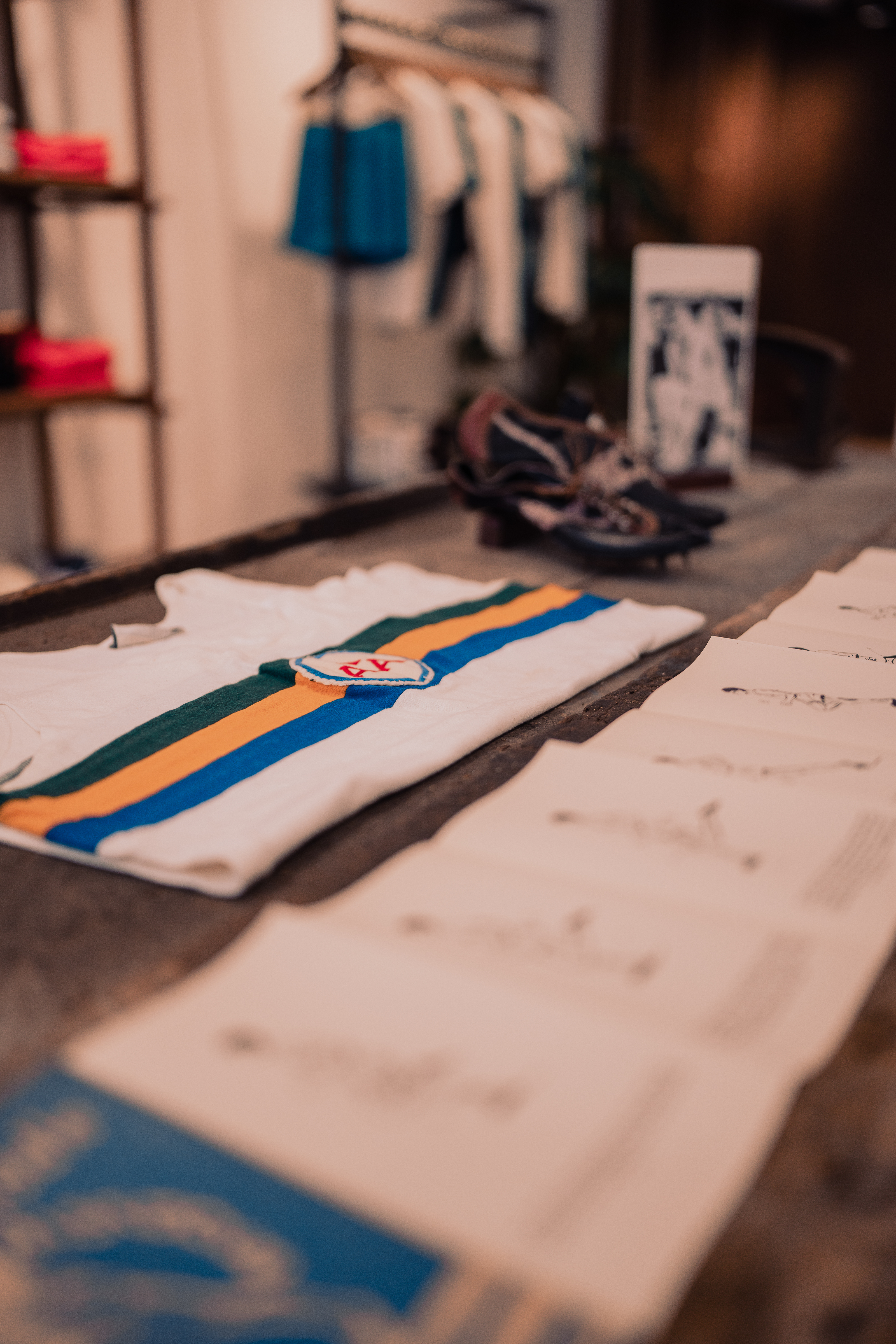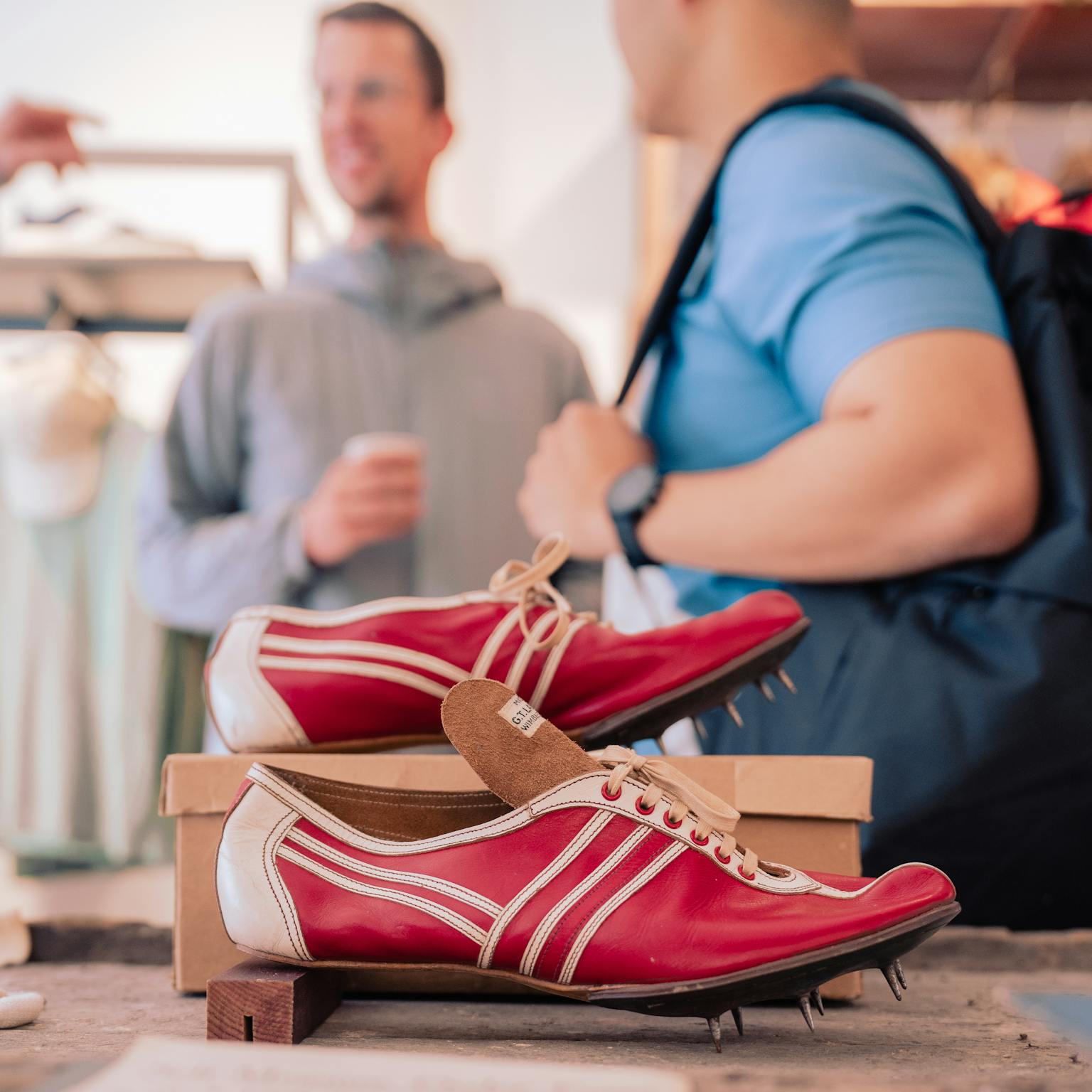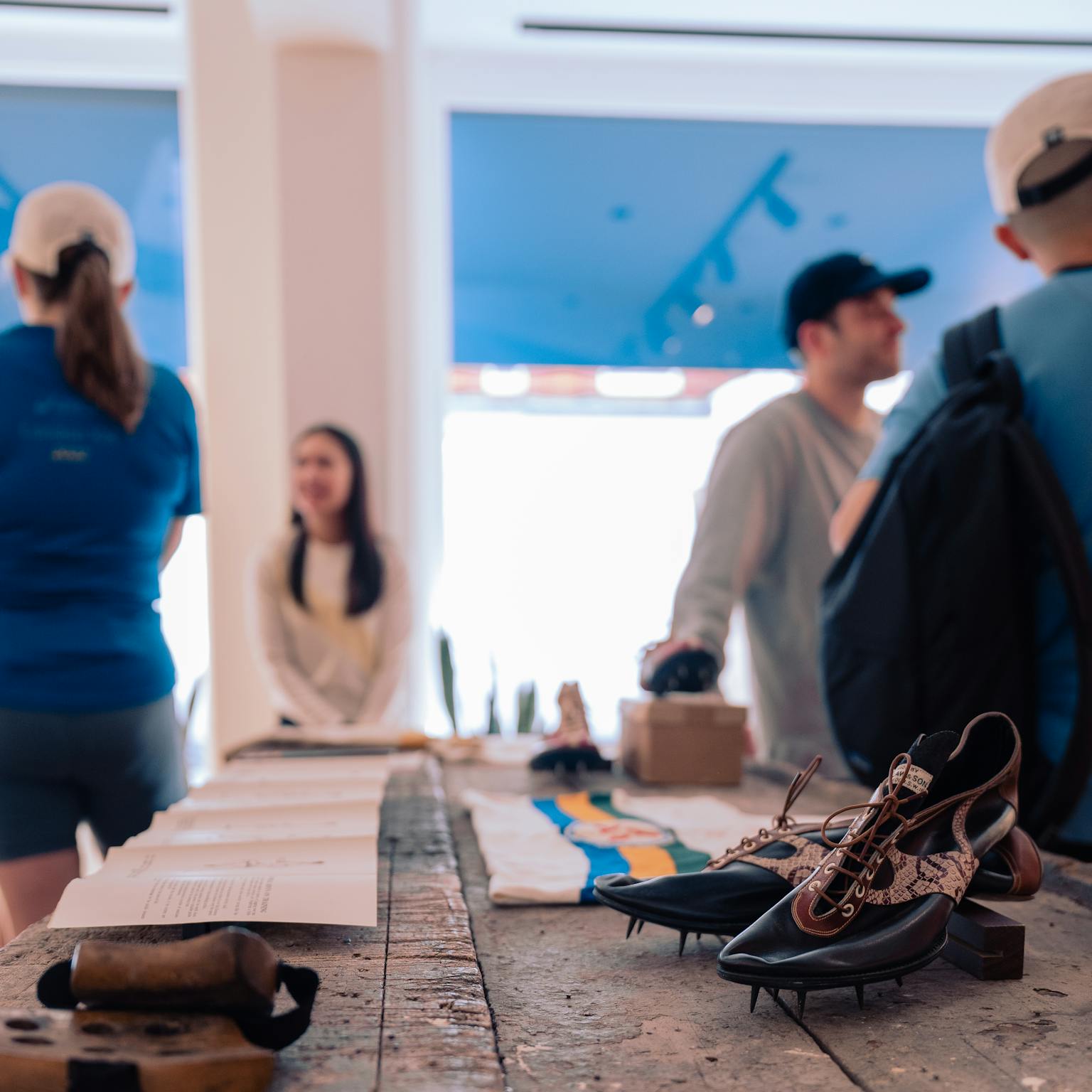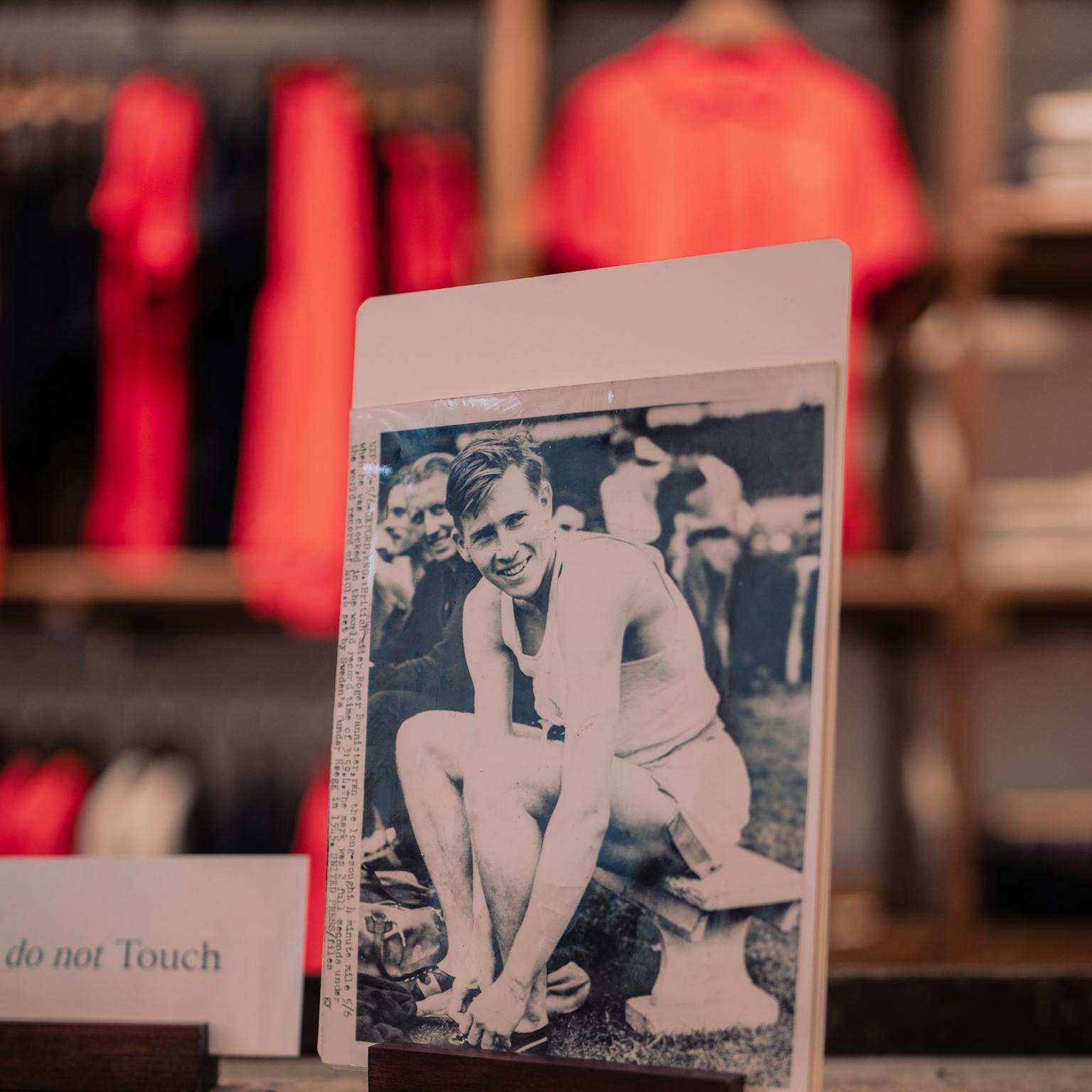
Like many collectors, Job King’s passion for collecting started at a young age. Growing up in Northamptonshire in the UK – known as “the home of shoemaking” and the birthplace of running spike maker GT Law and Sons – King received his first pair of leather spikes from his father at 10. His collection has since grown and today, King is a historian of running spikes as well as the Paralympic Pathway Manager at UK Athletics. He plays a vital role in preserving spike history and specifically honoring the shoe legacy of GT Law and Sons.
In 1954 the world turned its attention to Sir Roger Bannister, a trainee-doctor who set out to break the seemingly impossible barrier of the four-minute mile. Cheers drowned out Bannister's exact time: 3:59.4. A new new era had begun. Bannister's feat was described as the ‘greatest athletic achievement of the 20th century,' and it was GT Law and Sons' spikes that propelled him across the line.
While Bannister’s spikes are practically untouchable as the most expensive pair in history – his black kangaroo leather shoes sold for an impressive £266,500 ($412,062.30) at a Christie’s auction in 2015 – King has assembled his own collection of GT Law spikes, shoes and other artifacts from Bannister’s record-setting day.
“It was never about establishing a collection. It was just an interest in how they're made, what they're about, and how they've evolved over time,” he explains. Running artifacts became an ever-growing curiosity for King. After 30 years and hundreds (probably thousands) of artifacts, he has generously put his collection on display at the London Trackhouse for a limited time.
Before the era of super shoes, fresh foams and next percents, GT Law and Sons offered runners a choice between snakeskin material, various colors, and unique designs for each event – something Bannister was drawn to. Within King’s collection are items that transcend time and technology. They possess a spirit that any runner can feel – an aspiration and amateurism that carries them across the finish line and connects us with the footsteps of those who came before.
King's spike collection commemorates Bannister’s record, inspired as it is by British athletic iconography, ephemera and legends. It serves as a reminder that, when it comes to breaking barriers, perhaps it is not the shoes – as Bannister once wrote, “It is the brain, not the heart or lungs, that is the critical organ.”
The Collection
Workbench
GT Law likely used this bench after the WWII bombing in Revelstoke Road in 1940, when he relocated to a former carpentry workshop on Watling Street, Towcester. King suspects that the workbench may have had a previous life as a carpenter's workstation before GT Law occupied the space.
In Northamptonshire, one of the hubs of shoemaking, Law enlisted the help of locals for shoe production. Mr. Stafford handled clicking and solving the leather, Mrs. Hillyard sewed the leather panels together, and Mr. Tompkins closed the shoes on the last. Soles and studs were fixed in the Wimbledon shop, which remained operational until the early 1970s. Running spikes had ceased production before then. Although it's uncertain if Mr. Tomkins was directly involved in the production of Banister’s spikes, King believes that such details bring a company to life, making it more than just a label and a shoe.
Similar to other British leather running spikes of that era, GT Law struggled to compete with the influx of mass-produced running shoes from Germany and Japan, along with the introduction of synthetic tracks. Within a decade, the style and craftsmanship of the leather running spike underwent a revolution, leading to the designs we are familiar today.
Notable athletes like Gordon Pirie have praised GT Law spikes as much lighter than other shoes. Pirie had his first pair of track spikes custom-made by Law in 1948. They lasted for years and he wore them until the 1952 Helsinki Olympic Games, where he believes he missed out on a medal due to worn-down spikes, coming in fourth. “I think that I might have been in contention in that 5,000m race when the sprint started if those shoes had had any steel left in them to grip the track,” he writes. The leather soles were scored with abrasions as he dug his toes into the cinder track, slipping at every step.
33rpm Recording of 4-min Mile
and Other Interviews
After Roger Bannister's famous feat, breaking the 4-min mile at Iffley Road in Oxford, news agencies captured a rare audio interview with him and his pacers. In the race, Banister wore GT Law spikes, as did Chris Brasher. Brasher's own running career includes finishing first in the 3,000m steeplechase at the Summer Olympics in Melbourne two years later, but was disqualified for alleged interference with another runner. After an investigation, he was reinstated as a gold medalist. Brasher later co-founded the London Marathon with John Disley in 1981.
In the 1950s, there was no live TV coverage of the race, so those who weren’t track side relied on the radio to witness Bannister’s race. “The record that I produced is one of the first pressings of that race. I've never seen another one since,” says King.
Running Uniforms
1930s to 1950s
This singlet features the iconic “AAA” logo with three stripes and a badge, just like the one Bannister wore during his record-breaking mile. AAA represents the Amateur Athletics Association, established in 1880, which played a key role in formulating the initial track and field rules, akin to the role of USATF in the United States.
The accompanying plain white shorts, bearing the marks of wear and stains, resemble the ones Bannister wore. Designed by Geoff Dyson for Gymphlex in the 1950s, these shorts reflect Dynson’s status as a pioneering athletics coach and author of the influential book, “Mechanics of Athletics,” which served as a coaching ‘bible’ of the time and remained in print until the 1970s.
“I'm interested in design and evolution. Not necessarily who wore it. It's one of those beautiful things where it was special to the person at the time, but you don't necessarily know who now,” says King. “Some things I've got have got direct providence, but that isn't really the reason I get it.”



